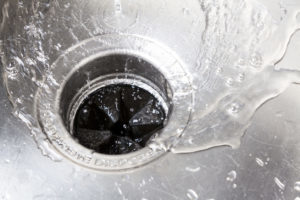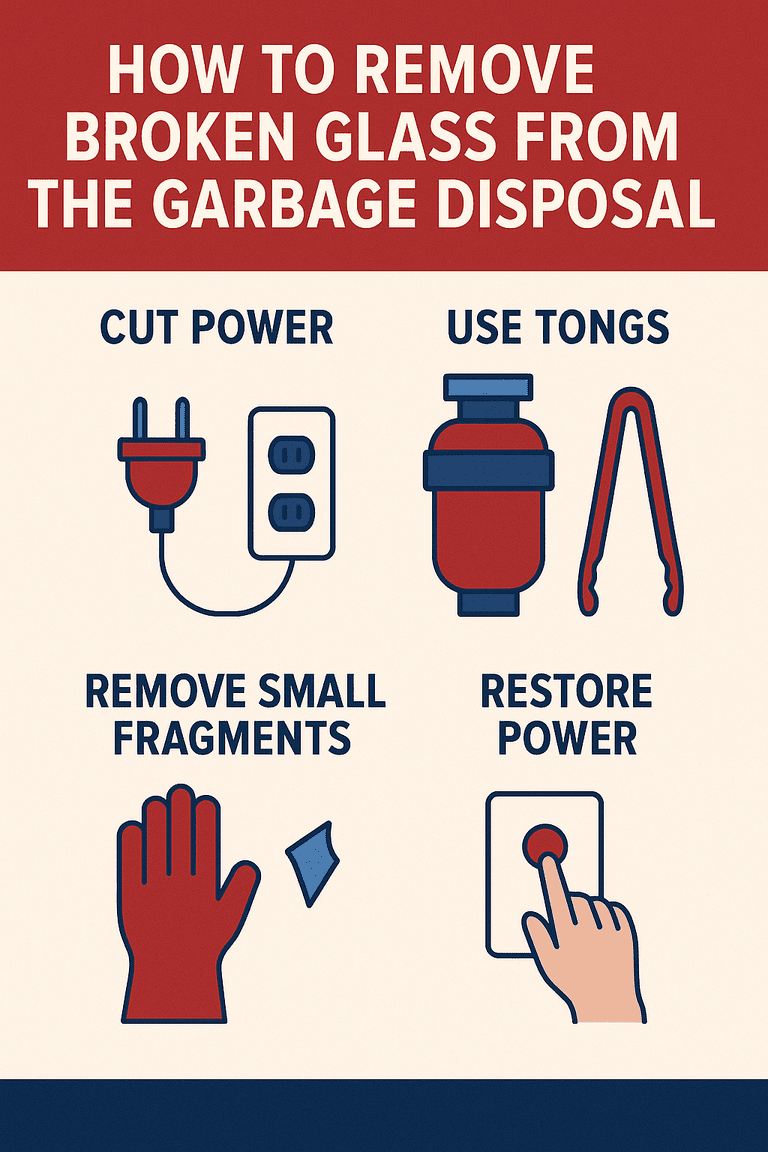How To Remove Broken Glass From Your Garbage Disposal
Len The Plumber breaks down everything you need to know about safely removing broken glass from your garbage disposal in this helpful guide. We’ll cover:
- Safety hazards to avoid while removing broken glass from the garbage disposal
- Equipment you’ll need to remove the glass safely
- How to get the glass out of your garbage disposal step by step
- When to contact a plumber for garbage disposal repair
If you’ve ever broken a dish in your kitchen sink, you understand the nightmare of having shards of glass stuck inside your system. Removing broken glass from your garbage disposal can be a hazardous process if you don’t take the proper safety precautions.
Before getting started, it’s important to understand what you’ll need and what the process involves so you can restore safe system operation in no time.
Safety Hazards To Avoid When Removing Glass From the Garbage Disposal
First things first — it’s important to know what not to do when attempting to remove broken glass from your garbage disposal. Be sure to avoid the following safety hazards during this process:
- Don’t leave the power on: When removing anything from your garbage disposal, you must first cut the power to your system. Leaving the power on while removing glass from your system can increase your risk of injury.
- Don’t stick your hands down the disposal: Never stick your bare hands down the garbage disposal when removing broken glass. This is a surefire way to get a nasty cut. Instead, rely on other tools to carefully remove what’s clogging your system.
- Don’t hover over the disposal: After you’ve removed everything from inside your system and restored power, don’t make the mistake of hovering your hands or face over the unit. You could have missed small pieces of glass that could shoot up out of the disposal and injure you.
What You’ll Need To Remove the Broken Glass
Before beginning, you’ll need to assemble the proper tools. These include:
- Thick rubber gloves
- Needle nose pliers
- Shop vac with a long-headed attachment
- Hex key
Step-By-Step Instructions for Removing Broken Glass From Your Garbage Disposal
Now that you’re properly equipped and know the safety hazards to avoid, it’s time to get the glass out of your garbage disposal. Here’s how to do it the safe way:
1. Turn Off the Disposal
As stated before, you must turn off all power to your system before beginning the process.
Not only should you turn off the disposal itself, but you should also switch off the breaker at the service panel as well for good measure.
2. Remove Larger Pieces of Glass With Pliers
Using your needle nose pliers, begin pulling out as many glass pieces as you can find hiding in your garbage disposal.
Most of the larger shards will be located toward the top of the drain’s opening.
3. Remove Smaller Pieces With a Shop Vacuum
You’ll need to use your shop vac to remove the smaller pieces of glass. Use the long-head attachment to begin sucking out the glass from the drain opening.
Depending on how large the pieces are toward the bottom, some shards may need to be sucked out individually if the nozzle isn’t wide enough to capture them.
4. Use the Hex Key To Turn the Blades
After vacuuming, there may still be remaining bits of glass. To remove these, use the hex key underneath your disposal to turn the blades.
Continue to suck up any remaining glass with your shop vac. Repeat steps three and four as many times as necessary to eliminate the shards.
5. Restore Power to Your Disposal
Once you feel confident that all the glass has been removed from your disposal and sink, restore power to your system by switching the breaker to the “on” position in the service panel and turning on the unit.
When To Call a Plumber for Help
It’s important to know when to call in for professional help. Consider calling a plumber to remove the glass from your system if:
- You don’t have the proper tools.
- Your system won’t turn back on after attempting DIY glass removal.
- You hear strange noises from your system after removing broken glass.
Len The Plumber has delivered the fast, reliable garbage disposal repair and clog removal services that families have trusted for over 25 years.
Our expert team can efficiently restore your garbage disposal to working condition in no time.
If you have broken glass stuck inside your garbage disposal and need help getting it out, call Len The Plumber at (800) 950-4619 to request plumbing repair today!
Glass in Garbage Disposal FAQ
Can I reach into the garbage disposal to remove broken glass?
No. You should never stick your hand into a garbage disposal, even if the power is off. Use tools like needle nose pliers and a shop vacuum to safely remove the glass without risking injury.
What should I do first if glass falls into my garbage disposal?
Immediately turn off the power to the garbage disposal at the switch and the circuit breaker. This ensures your safety before attempting any removal of broken glass.
What tools do I need to remove broken glass from a garbage disposal?
You’ll need thick rubber gloves, needle nose pliers, a shop vacuum with a long-head attachment, and a hex key to safely and effectively remove glass from the disposal.
How do I get small pieces of glass out of the disposal?
After removing large shards with pliers, use a shop vac with a narrow nozzle to vacuum out smaller fragments. You may need to rotate the blades using a hex key to access hidden pieces.
What’s the safest way to check if all the glass is removed?
Once you’ve vacuumed and turned the blades manually, check carefully with your tools (never your hands) for leftover shards. Repeat the vacuuming and blade-turning steps as needed until the area is clear.
Why won’t my garbage disposal turn back on after removing glass?
The motor may have tripped or internal damage may have occurred. If the breaker is on and the unit still won’t start, call a professional plumber to inspect and repair the disposal.
What are signs I need a plumber after removing broken glass?
Call a plumber if you don’t have the right tools, your garbage disposal won’t turn on, or you hear grinding, rattling, or humming noises after the glass has been removed.
Is it safe to use the disposal after removing the glass?
Yes, as long as you’re sure all glass has been removed and the unit is functioning properly without unusual sounds. If you’re unsure, it’s best to have a plumber inspect it.
Can broken glass damage my garbage disposal?
Yes. Glass can dull or damage the blades, clog the drain, or harm internal components. Prompt and proper removal is critical to prevent further damage or costly repairs.
How can I prevent this from happening again?
Avoid washing fragile items directly over the disposal, and always check the sink for glass before turning it on. Use sink strainers when possible to catch debris.
From Len The Plumber Heating & Air
 Coupons
Coupons 



